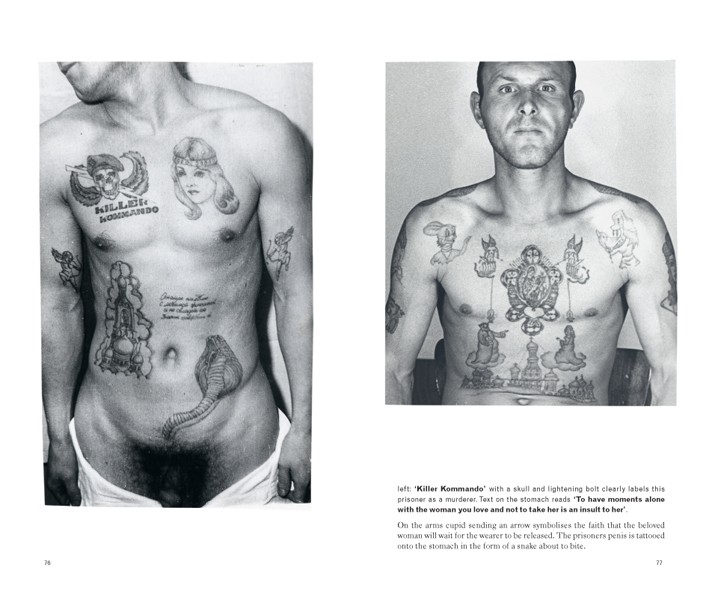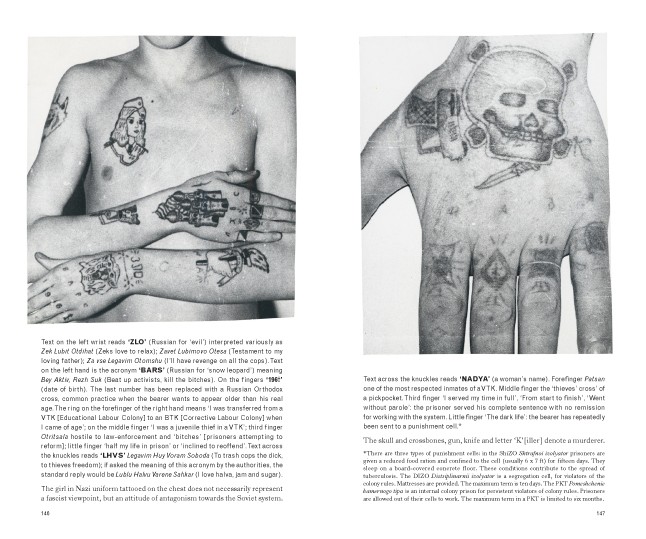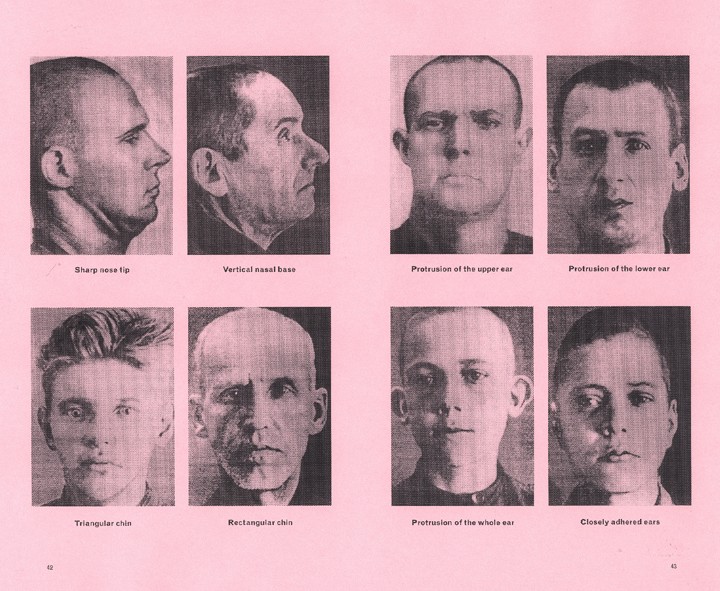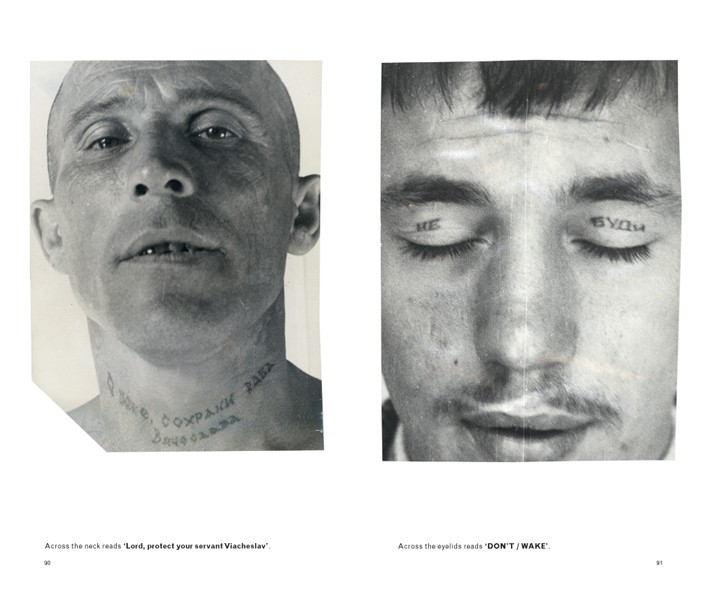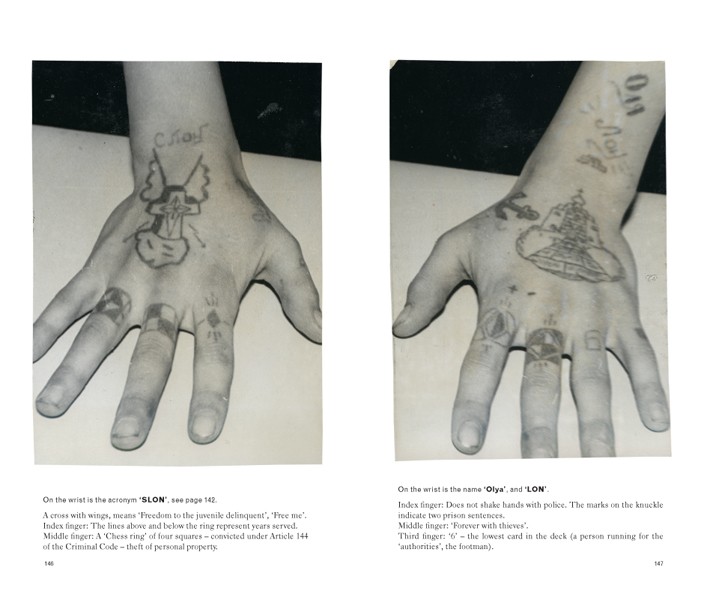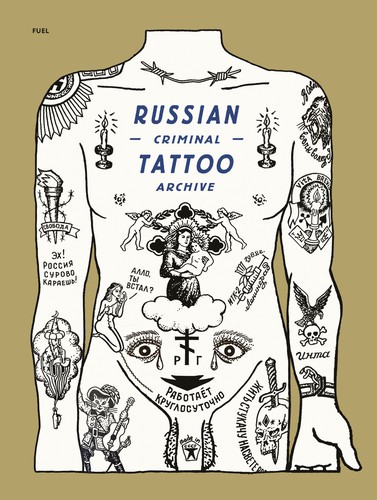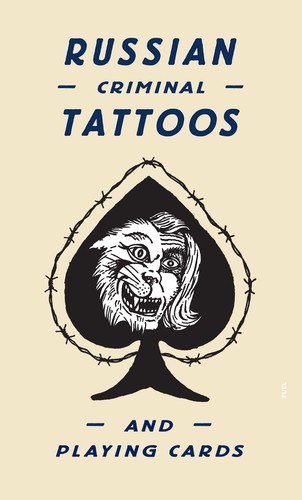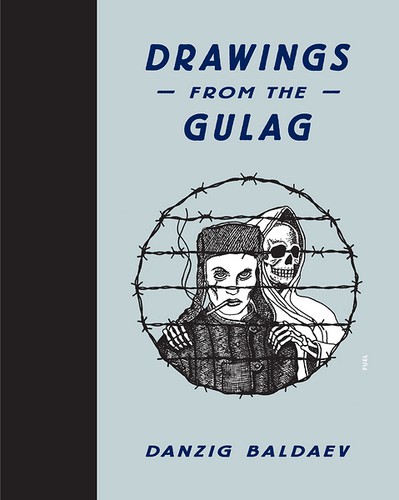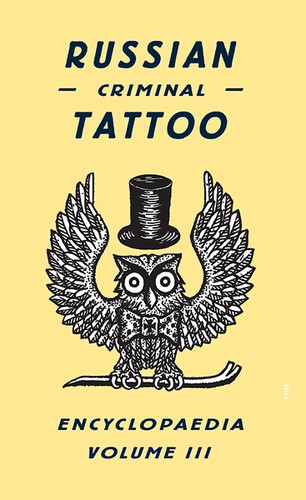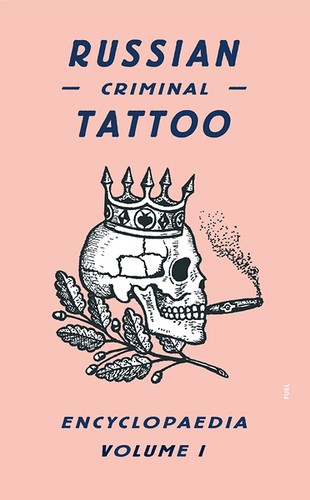Russian Criminal Tattoo Police Files
Previous project Next project Zoom
Zoom
205x125 mm hardback
256 pages
ISBN 978-0-9568962-9-2
Published in 2014
10% goes to the British Red Cross Ukraine Crisis Appeal.
Arkady Bronnikov is regarded as Russia’s leading expert on tattoo iconography. He was a senior expert in criminalistics at the USSR Ministry of Internal Affairs for over thirty years. As part of his duties he visited many correctional institutions of the Ural and Siberia regions where he interviewed, gathered information and took photographs of convicts. During this time he collected thousands of photographs of tattooed prisoners. He regularly helped to solve criminal cases across Russia by using his collection of tattoos to identify culprits and corpses.
This book includes over 180 photographs and accompanying texts from the Arkady Bronnikov collection. Also featuring a 48-page section printed on pink paper with texts, mug shots and criminal profiling.
See also Russian Criminal Tattoos and Playing Cards
View more photographs – here.
Reviews
The Guardian - in pictures
The meanings behind the designs are myriad but highly specific: signfiers of age, histories of crimes committed and allusions to Russian political history, whether a tribute to the revolutionary Lenin or antagonistic to Stalin's regime. Long have tattoos been considered as personal as fingerprints, these tattoos documenting a set of aggressive histories give a biographical glimpse into the character beneath the skin. Look beyond the ink and you see young men, confrontational and vulnerable by turns.
AnOther
Russian Criminal Tattoo Police Files, published by FUEL, is probably the largest collection of prison tattoo photographs to date. Tattoos tend to mean a lot more in prison [they] can become a significant part of a prisoner’s uniform, not only marking the crime they’re in for, but also serving as a unique communication tool for others. A dagger through the neck, for instance, suggests that an inmate has murdered someone in prison and is available to carry out hits for others. Meaning, if you see that guy walking towards your cell once all the guards have disappeared, you should run the fuck away.
Vice
The photographs of nameless figures present a visceral representation of criminal society; their bodies illustrate an unofficial personal account of their history, imbued in symbolism and metaphor.
Designboom

